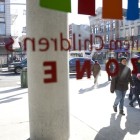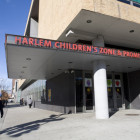The state legislature’s eleventh-hour vote last month to expand New York’s charter schools will add 114 new charters to the 99 currently operating in New York City. But while the new law paves the way for new schools, and perhaps for millions in federal education funding, it doesn’t create new space for the new schools—or for the current charters, which are bursting at the seams as they add students, year by year.When a new school opens, it generally begins with one or two grades – typically, kindergarten and first – and “grows up the grades” over time, adding a new kindergarten cohort every year, as older children progress. This means that schools that aim to encompass K-8 begin small and eventually expand to a much greater size. City Department of Education (DOE) officials say that 62,500 students will attend charter schools this fall. But rough estimates by the New York City Charter School Center suggest that about 140,000 students may eventually attend charter schools in New York City, once all of the charters reach capacity.









